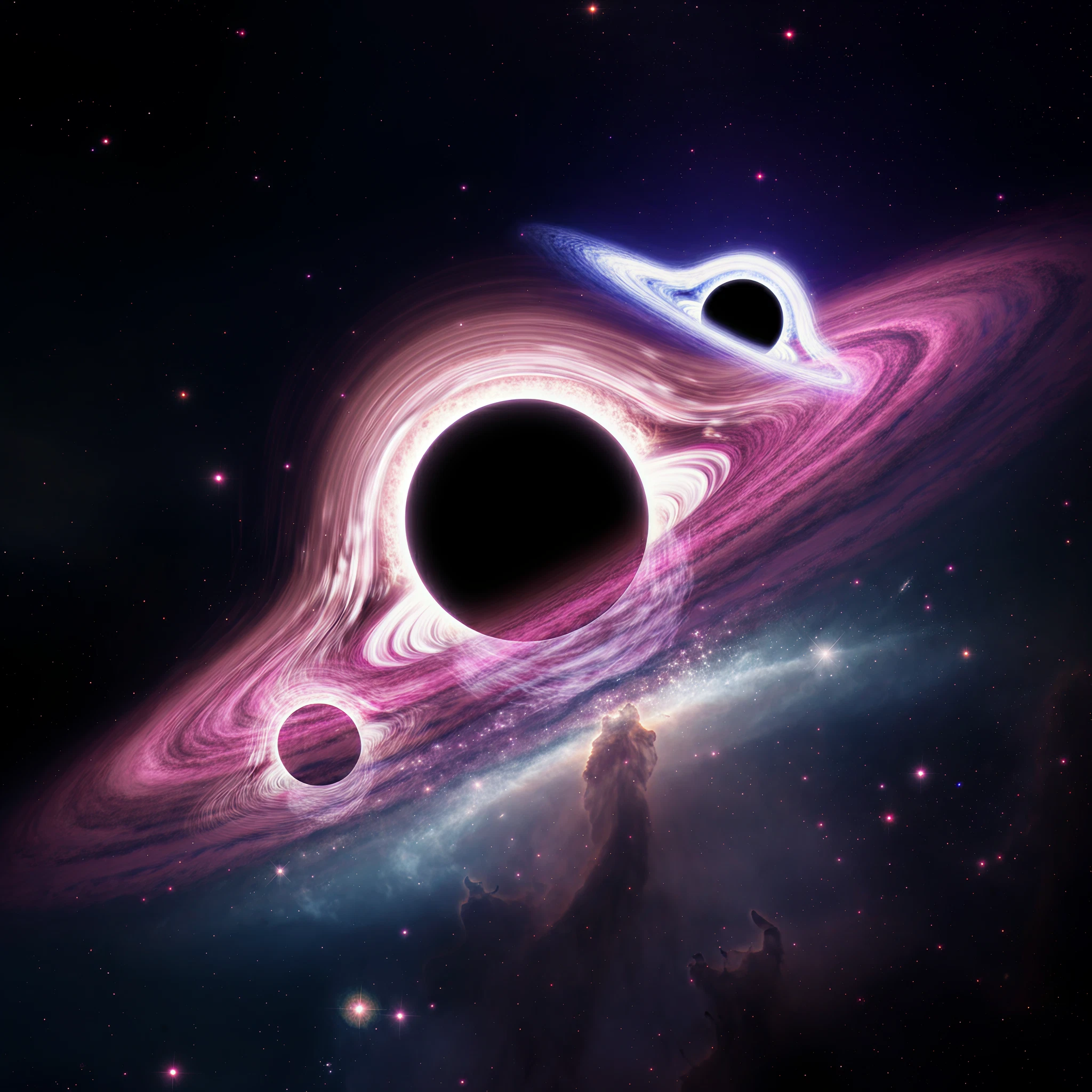Imagine a cosmic event so powerful that it can outshine the galaxy it resides in, releasing more energy than 100 supernovae combined. This extraordinary phenomenon occurs when a star wanders too close to a black hole and meets its dramatic demise. Known as a “tidal disruption event” (TDE), these spectacular occurrences offer a rare glimpse into the mysterious behavior of black holes and the forces that govern the universe.
What Are Black Holes?
Black holes are regions of spacetime where gravity is so strong that nothing—not even light—can escape. They form when massive stars collapse under their own gravity, creating a compact object with infinite density called a singularity, surrounded by an invisible boundary known as the event horizon. There are stellar-mass black holes, formed from dying stars, and much larger supermassive black holes, which reside at the center of most galaxies, including our Milky Way.
The Nature of Stars
Stars are luminous spheres of plasma held together by their own gravity. Deep within their cores, nuclear fusion converts hydrogen into helium, releasing immense energy in the form of light and heat. Stars can live for millions to billions of years, depending on their mass, but their encounters with black holes can cut this life span short in the most spectacular and violent way imaginable.
Tidal Disruption Events
A TDE begins when a star strays too close to a black hole, crossing its “tidal radius.” At this point, the black hole’s gravitational pull becomes stronger than the star’s self-gravity, stretching and tearing the star apart in a dramatic process known as “spaghettification.” The star’s fragments form an accretion disk around the black hole, a swirling disk of superheated gas that shines brightly as it spirals inward.
The Aftermath
The tidal debris streams into the black hole, releasing high-energy radiation such as X-rays and ultraviolet light, which can be detected by telescopes. This “feeding frenzy” can last for months before the brightness gradually fades as the black hole consumes the leftover material. For a brief time, the black hole transforms from a quiet cosmic entity into one of the brightest objects in the universe.
Famous TDE Observations
NASA’s missions have been instrumental in uncovering and studying TDEs, showcasing the incredible energy these events release. One notable example, nicknamed “Barbie,” was detected by Caltech’s Zwicky Transient Facility in 2020. This event, like others, provided invaluable insights into the nature of black holes, as well as their impact on surrounding galactic environments.
The James Webb Space Telescope and future missions like the Nancy Grace Roman Space Telescope are poised to further expand our understanding of TDEs, potentially detecting these events in the distant universe.
Why Understanding Black Holes Matters
Beyond their dazzling destruction, TDEs help scientists uncover the otherwise hidden properties of black holes and their host galaxies. By studying these events, astronomers can learn about the behavior of matter under extreme conditions, the evolution of galaxies, and the role black holes play in shaping the cosmos.
Black holes consuming stars may seem like the stuff of science fiction, but they are essential chapters in the unfolding story of our universe. Through advanced telescopes and innovative research, humanity continues to illuminate these fascinating cosmic events, pushing the boundaries of what we know about the infinite expanse beyond our planet.
Visual Illustrations
1. A star approaching a black hole:
Depict the moment a star begins to stretch as it nears the black hole’s tidal radius, illustrating the spaghettification process.
2. Formation of an accretion disk:
Create an image showing the glowing disk of superheated gas surrounding the black hole as the star’s matter is pulled inward.
3. The brightness of a TDE:
Highlight how the TDE momentarily outshines its host galaxy, capturing the radiance of the X-ray and ultraviolet light released.
4. Wide-field view of a galaxy’s central black hole:
Show the central regions of a galaxy, with the active black hole as the focal point, appearing as the power source for these cosmic events.
Through research, we are not only unraveling black holes but also deepening our understanding of the intricate dance between stars and the formidable forces of the universe.








